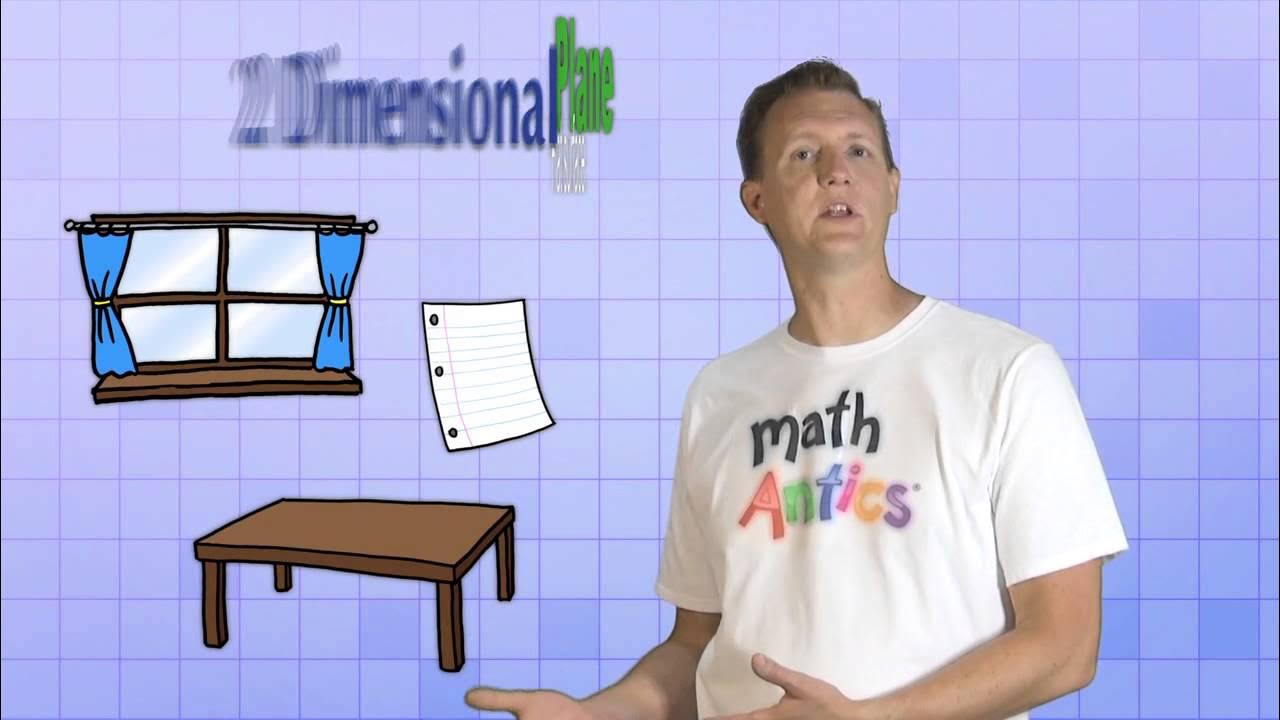Jarak garis ke garis, garis ke bidang, serta bidang ke bidang ( Dimensi Tiga )
Summary
TLDRThis educational video covers the topic of 3D geometry, focusing on the calculation of distances between lines, planes, and points in a cube. Through several examples, viewers learn how to determine the perpendicular distances between parallel and intersecting lines, as well as between lines and planes, and between different planes in a 3D space. Using the geometry of cubes, the video demonstrates key concepts with clear, step-by-step explanations, making it accessible for learners looking to understand spatial relationships and measurements in three dimensions.
Takeaways
- 😀 The video introduces a lesson on three-dimensional geometry, focusing on distances between lines, lines and planes, and planes to planes.
- 😀 The distance between two skew lines is defined as the length of the perpendicular segment connecting the two lines.
- 😀 An example problem involves a cube with edge length 4 cm, where the distance between certain lines is calculated using geometric principles.
- 😀 The distance between a line and a plane is the length of the perpendicular from the line to the plane.
- 😀 An example using a cube with edge length 10 cm is used to calculate the distance from a line to a plane, with the solution involving the diagonal of the cube's face.
- 😀 The distance between two planes is determined by finding the perpendicular segment connecting them, with a specific example using a cube with edge length 9 cm.
- 😀 Another example involving a cube of edge length 6 cm is used to calculate distances between various planes and points, showcasing the use of diagonals in space.
- 😀 The concept of finding distances between different planes and points in three-dimensional space is explained with several cube-based examples.
- 😀 The calculation of distances involves using geometric properties of cubes, such as face diagonals and space diagonals, to find perpendicular distances.
- 😀 The video concludes with a message of thanks and a hope that the lesson on three-dimensional geometry has been helpful and informative.
Q & A
What is the focus of the video script?
-The video script focuses on teaching three-dimensional geometry, specifically the calculation of distances between lines, lines and planes, and planes in 3D space, using examples involving cubes.
How is the distance between two lines defined in the script?
-The distance between two lines is defined as the length of the line segment connecting the two lines that is perpendicular to both lines.
What is the first example discussed in the script regarding the distance between lines?
-The first example discusses a cube with vertices labeled KL, MN, PQ, RS, and calculates the distance between two lines KL and SR.
What mathematical concept is used to calculate the distance from a line to a plane?
-To calculate the distance from a line to a plane, the script uses the concept of the perpendicular distance from the line to the plane, represented by a line segment perpendicular to both.
How is the distance from line KL to line SR in the first example calculated?
-The distance from line KL to line SR is calculated by finding the perpendicular distance between them, using the fact that the lines are part of a cube and the distance is related to the diagonal of a cube's side.
What does the script explain about the distance from a line to a plane in the second example?
-In the second example, the script explains the distance from line AI to plane BDFH, which is calculated as half the length of the diagonal AC of the cube.
What is the significance of the cube's diagonal in calculating distances?
-The cube's diagonal plays a key role in calculating distances, as it provides a direct relationship between different geometric points and planes in the cube, helping to determine the perpendicular distances.
How does the script describe the process for calculating the distance between two planes?
-The script explains that the distance between two planes is calculated by finding the length of the perpendicular segment between them, which is based on the specific positioning of the planes in 3D space.
What is the final example about in the script, and how is the distance calculated?
-The final example involves calculating the distance between two planes, AFH and KLM, using the distances between various points and planes in a cube. The process includes breaking down the total distance into smaller components.
What conclusion does the script offer at the end of the lesson?
-The script concludes by thanking the viewers and hoping that the lesson on calculating distances in 3D geometry was useful and beneficial to their understanding of the topic.
Outlines

Esta sección está disponible solo para usuarios con suscripción. Por favor, mejora tu plan para acceder a esta parte.
Mejorar ahoraMindmap

Esta sección está disponible solo para usuarios con suscripción. Por favor, mejora tu plan para acceder a esta parte.
Mejorar ahoraKeywords

Esta sección está disponible solo para usuarios con suscripción. Por favor, mejora tu plan para acceder a esta parte.
Mejorar ahoraHighlights

Esta sección está disponible solo para usuarios con suscripción. Por favor, mejora tu plan para acceder a esta parte.
Mejorar ahoraTranscripts

Esta sección está disponible solo para usuarios con suscripción. Por favor, mejora tu plan para acceder a esta parte.
Mejorar ahoraVer Más Videos Relacionados

3D Geometry | Equation of Plane & Angle Between Plane | By Gajendra Purohit

HUBUNGAN ANTARA UNSUR UNSUR DALAM BANGUN DATAR DAN BANGUN RUANG

Definisi Titik, Garis dan Bidang dalam Ruang | Geometri Ruang | Matematika

Bangun Datar [Part 1] - Garis dan Sudut

Math Antics - Points, Lines, & Planes

konsep datar (titik, garis, bidang, sudut, dan segi banyak)
5.0 / 5 (0 votes)
